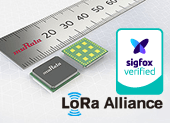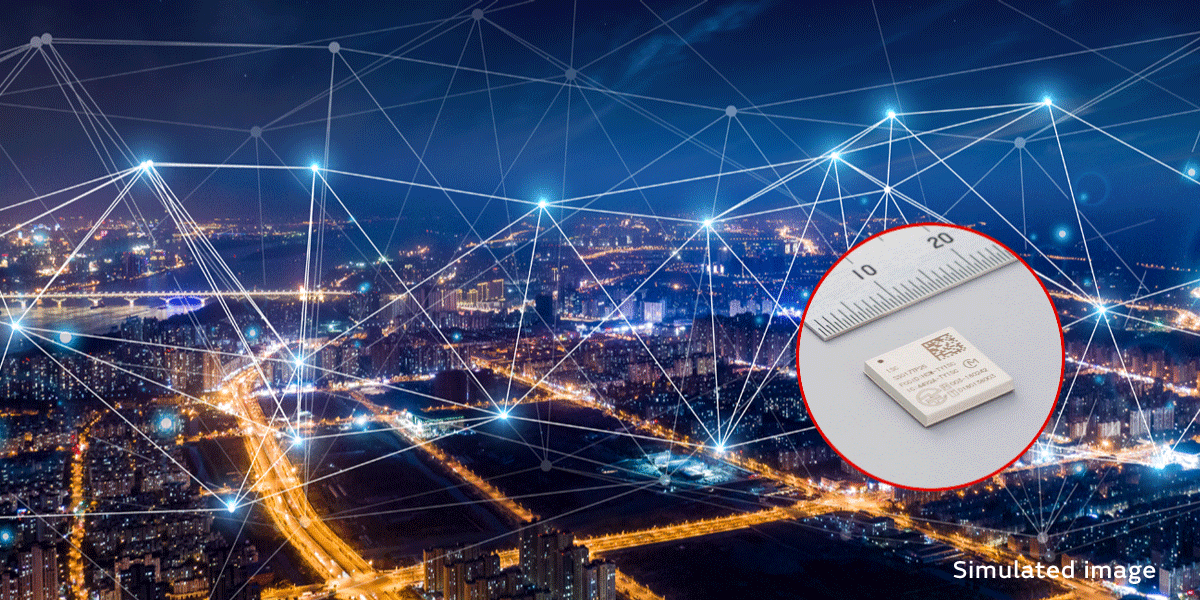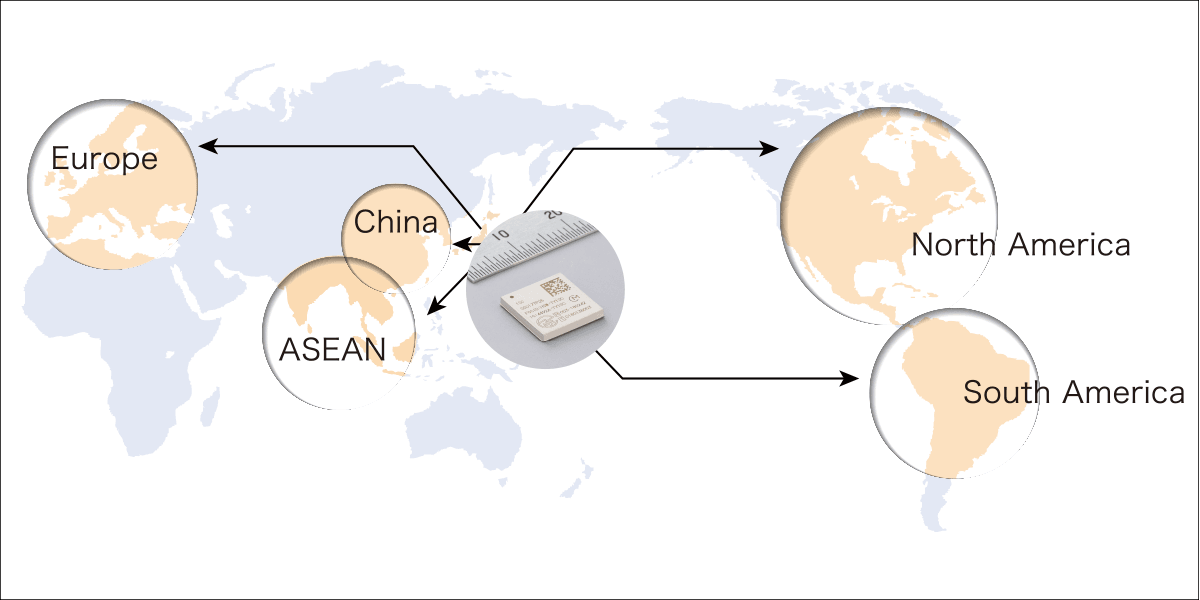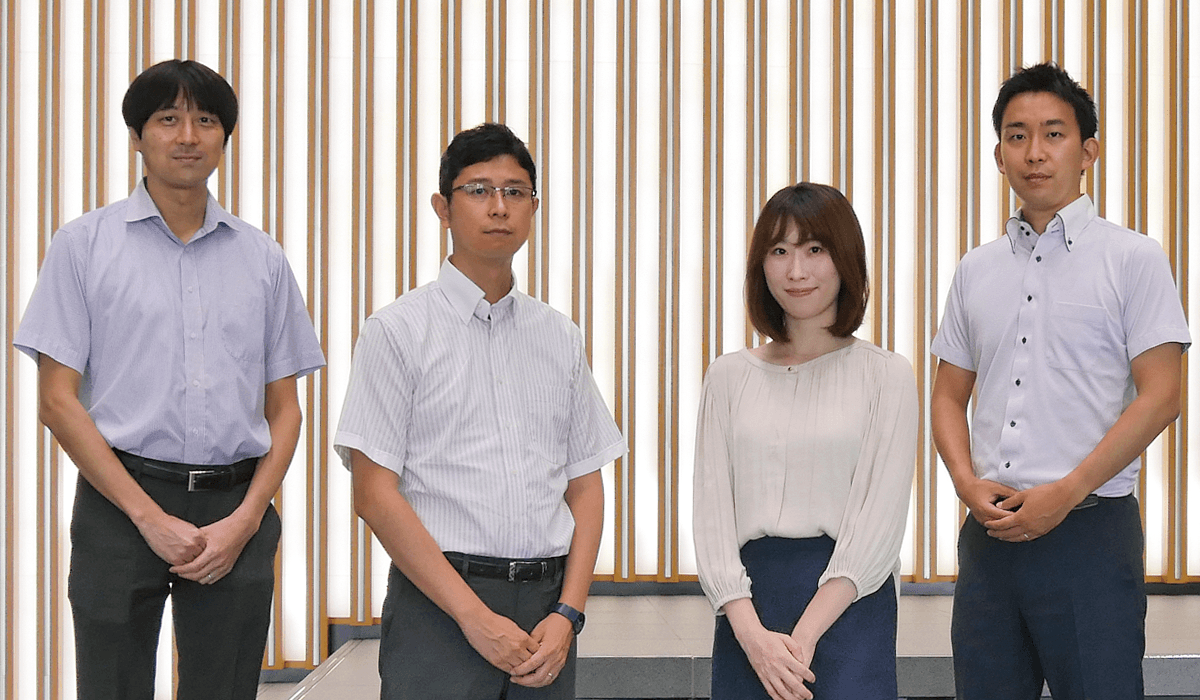Sigfox Module


In the first part, we introduced the significance of an ultra-compact size and low-power-consumption design, which are the strengths of Murata's cellular LPWA modules, as well as the efforts made in the development process to achieve these features. Murata has a large share of the market for the wireless communication modules used in smartphones and other devices. We can take advantage of our development experience when developing ultra-compact, low-power modules. However, there are different considerations in the development of modules for IoT devices than those for smartphones. In this second part, we asked about Murata's efforts to provide easy-to-use modules for customers developing IoT devices.
--Murata has developed and supplied many wireless communication modules for mobile phones. What are the differences in developing modules for mobile phones and for IoT devices?
Just because a company is developing IoT devices, it does not mean that the company is an expert in wireless communications technology. This is probably the most significant difference.
Our customers who develop and produce mobile phones have many years of experience in making mobile phones. For this reason, they know how to handle high-frequency radio waves and what to keep in mind in order to make the device usable in a variety of locations. Moreover, because communication quality and reliability are directly related to the value of the device, they are investing enormous development resources in this area.
By contrast, many customers developing IoT devices are focusing on sensors and other data collection methods to develop the technology. For example, if you're a customer developing an IoT device for agriculture, you'll develop technology that focuses on where, how, and how often to detect the temperature of the field. Wireless technology to transfer the data is an essential feature. However, wireless technology is a challenging technology to provide differentiation, and they don't want to go into it in depth if possible. Many customers believe that the best thing to do is to obtain a reliable means of data transfer from an outside source. Some customers have tried to develop wireless functions in-house, but found it too difficult to do and came to us for help.
--The situation may be completely different for the same wireless device. What must you keep in mind when developing cellular LPWA modules for IoT devices?
Since we are experts in wireless communications, we believe it is important for us to make sure that our wireless communication modules are easy to use and can provide reliable connectivity for anyone. This reduces our customers' resources needed for development of IoT devices and allows them to allocate more resources to data collection, which is their primary focus*1.
*1: Our efforts to assist customers in developing IoT devices are not limited to module development. In addition to modules, Murata has many other products, and we can provide multifaceted assistance by supporting antenna design, simulating batteries, and suggesting batteries suitable for applications.

We have extensive experience in testing to verify the connectivity of wireless communication modules. For example, with Wi-Fi, which has been in use for many years, new communication standards have been introduced one after another, leading to complex usage situations where multiple specifications are used together in the market and resulting in a vast number of test items. At Murata, we have created our own evaluation items to enable effective and efficient verification. We also provide testing services to customers who have selected our modules for their products, many of whom have used our testing services in the development of 70 products and 10 million applied devices. We are applying this testing knowledge to the evaluation of cellular LPWA modules to further refine the software for developing modules with reliable connectivity.
It is also important to keep in mind that, even if the IoT device itself is highly complete, reliable connectivity is not possible without smooth integration with the system to be connected. In fact, many customers often hit roadblocks in the operational phase after completing their IoT devices.
We worked with carriers to develop the cellular LPWA module in a way that facilitates integration of the system with the module. For example, we have a strategic collaboration with SoftBank Corp. ("SoftBank" below) to optimize tuning and validation for SoftBank's IoT platform. This allows Murata's modules to be used on the SoftBank platform without any difficulties.
We work with these carriers and partners to ensure that advanced communications protocols that increase the quality and security level of communications are readily available. For example, a protocol called OMA LwM2M*2 is often used in carrier-provided IoT services, and this can be pre-implemented in a module, allowing customers to easily connect to the carrier's IoT platform. The use of a technology called NIDD*3 is sometimes required to enhance security functions, and software to utilize this technology is installed in the module after negotiations with carriers and partners. Similar cooperation is taking place with carriers around the world.
*2: OMA LwM2M, Open Mobile Alliance Lightweight Machine to Machine, is a protocol for managing data communications and IoT devices that connect machines to each other.
*3: NIDD, Non-IP Data Delivery. Because having an IP address makes you vulnerable to cyberattacks, this is a technology for transferring data without IP addressing.
--Who is responsible for complying with national and regional radio laws and obtaining carrier certification?
We obtain certification at the module level if we can. 3GPP*4 has standardized the high frequency standards used in cellular LPWA, and each carrier and other entities define evaluation items based on this standard. The content is basically the same as LTE, but there are some additional evaluation items specific to LPWA related to low power consumption. In the development of a module, it is essential to have an evaluation environment that reliably verifies the predetermined evaluation items. At Murata, we have invested so much in our evaluation facilities and equipment that we have a system in place to cover evaluation items that other companies cannot.
*4: 3GPP- 3rd Generation Partnership Project. This organization is responsible for the standardization of mobile communication systems such as LTE and 5G for use around the world. Originally established for the purpose of developing specifications for wireless communications technology for third generation mobile phones, the group continues to develop standards for third-generation and later mobile phones.
However, there are many cases where certification cannot be obtained unless the module is installed in the applied device. In these types of cases, we can assist the customer in the development of their applied device by providing the data required for certification and helping them with pre-verification.
Although the frequency of the radio waves used by cellular LPWA varies by country and region, Murata has designed its modules so that the same modules can be used throughout the world. However, the device must comply with the radio laws of the country and region where the service will be used. Many of the IoT device manufacturers who are our customers do not have a business presence in the region where their products will be released, and so we provide technical support tailored to the region in cooperation with local carriers. Murata's global offices located in the United States, Europe, Asia, and other regions provide a clear-cut advantage to our customers.

--Usually we tend to take for granted that communication devices like smartphones are connected to the Internet, but in reality, they are connected as a result of the efforts of many engineers.
In addition to ensuring reliable connectivity, there are other module-specific requirements for IoT devices that are different from those for mobile phones.
Generally, most consumers think that it is inevitable that consumer electronics will break after the warranty period has expired. Many people think that 5 years at the most, or at least 2 or 3 years of use is enough. In contrast, industrial IoT devices may require long-term reliability that lasts more than 10 years. In particular, because we are implementing low power consumption for our modules and we expect to use them for more than 10 years without battery replacement, it is important to ensure their long-term reliability. In the development of wireless communication modules such as Wi-Fi, we have conducted high-level reliability tests and built them for durability, even for consumer use. And so, these modules can also meet the reliability requirements for industrial applications.
Also, it is possible that IoT devices with cellular LPWA will be used outdoors and in harsh environments. For this reason, we conduct load tests that simulate use in harsh operating environments and repeat tests under various conditions, such as temperature, humidity, and impact, to confirm the reliability of our products for use in a broader range of situations. To provide water resistance, for instance, some applications may require more than just measures at the module level, and instead, measures may need to be implemented for the entire IoT device including the module. In such cases, Murata will provide its expertise to assist the customer with design.
--It looks like applications for cellular LPWA will continue to grow. What applications in particular do you expect to see growth going forward?
Considering the wide application compatibility of cellular LPWA, we believe that its use could expand beyond developed countries such as Japan, the U.S., and Europe to include developing countries such as Brazil, Mexico, and the Philippines. For example, smart agriculture, which monitors the conditions of large tracts of farmland and numerous grazing livestock, is one application that is likely to see widespread use.
In addition, we expect the strengths of our developed modules to be utilized for expanding the applications for wearable devices, where miniaturization is essential. There may be many different use cases in the fields of in-home medicine and health care. Customers have told us that Murata is the only choice for modules when it comes to using cellular LPWA for wearable devices.

Murata's cellular LPWA modules are at the forefront of the industry in opening up new uses for IoT because of their unrivaled ultra-compact design and low-power consumption. Their ease of use, which enables reliable connectivity to the Internet without the need for specialized knowledge of wireless technology, provides added support for application development. In fact, as a company that studies and deals with IoT applications every day, we have received many requests from various IoT-related application development projects. I believe that if Murata is able to reduce the cost of the 1 trillion sensors used around the world, we could spur innovation that will enable everything that was previously handled by local communication to be performed by wide area communication.
